Donald John Trump had his papers graded and the voters failed him as decisively as he failed them.
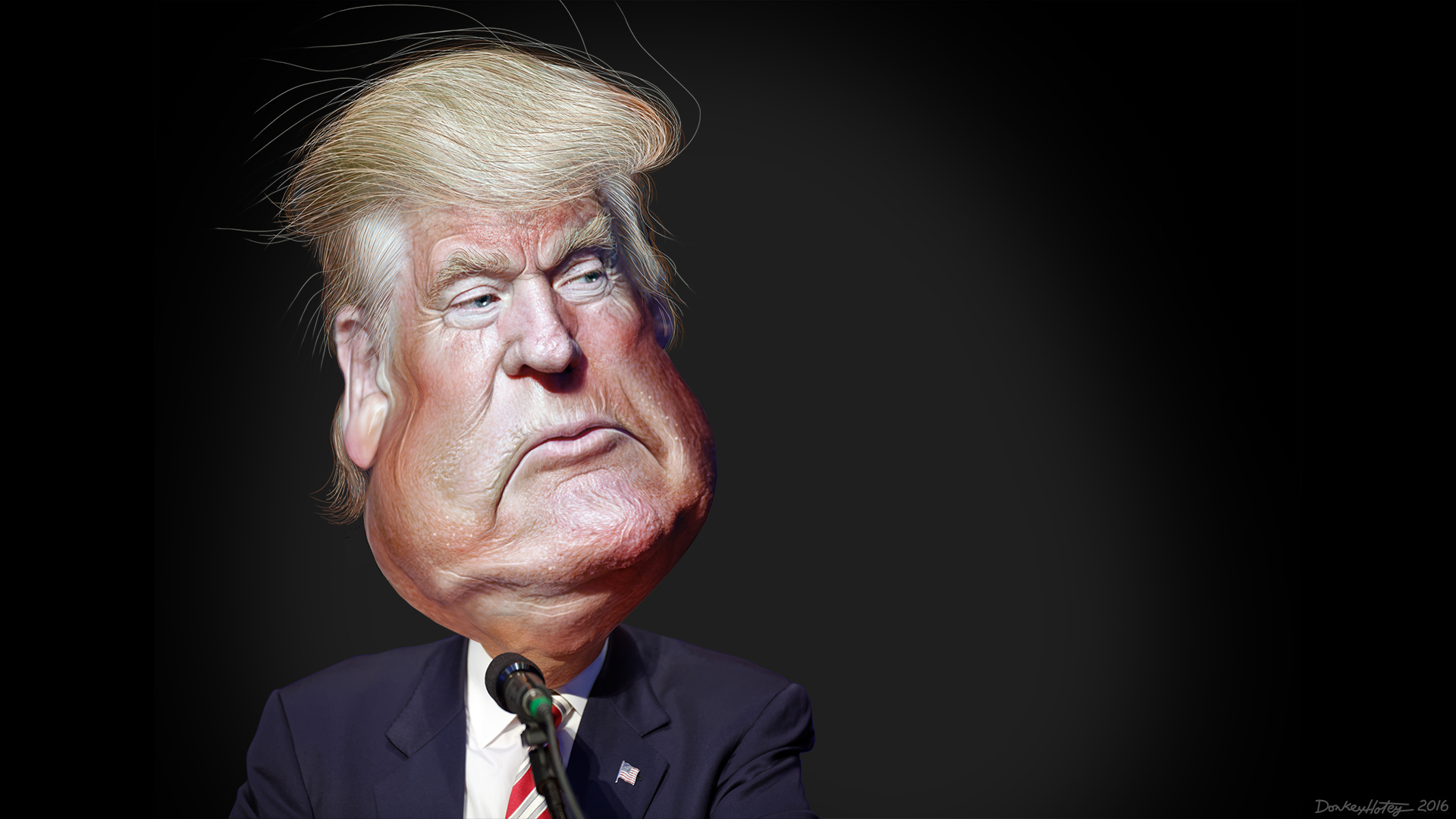
Donald Trump. Caricature by DonkeyHotey / Creative Commons.
Those of us who consider history to be recreational reading started in on Donald John Trump before he had resided at 1600 Pennsylvania Avenue for a year. Without the deep dive of a PhD dissertation, we seem to have a bias toward post WWII presidencies — or so it would appear from the conversations that have sadly become less frequent with the pandemic raging.
Even history buffs find it easier to know the wrinkles of administrations through which we lived or, at least, about which we heard our elders complain. Bush 41 and the Iran-Contra scandal. The price of gasoline under Jimmy Carter. I like to complain about when my second wife and I bought a home on a credit card — or so it seemed, when the interest rate was 15%!
When I say we “started in” on Trump, I mean on trying to compare him to other presidents. I cannot name another POTUS less qualified by education and experience. Trump adds to that an unwillingness to take advice or recognize expertise in others. One presidential term — four years — is very different from the eight years, two terms, that has become customary. Donald John Trump had his papers graded by the electorate at half time, and the voters failed him as decisively as he failed them.
I cannot name another POTUS less qualified
by education and experience.
The fair comparison for Trump is the POTUS who served his first/only term, made the changes Congress and the Courts would allow, and had his application for a second term denied by the voters. Just like Trump. A POTUS who did not seek a second term, I assume, accomplished what he set out to accomplish and he had no further interest in the job or no further interest strong enough to justify the exertions required to seek another term.
I set out here to display President Trump in the context of other one term wonders, persons who had an equal amount of time to do whatever work they were going to do. The first one came along while chief executives were still picked among those called “Founding Fathers.” I would take that to mean persons prominent enough to be hanged if the revolution failed.
John Adams (2), 1797-1801.
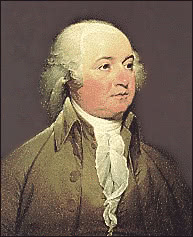 The revolutionaries who risked their necks for the new republic had to have met some minimal standard of competence or we would not be having this conversation. They had to build it before President Trump could break it—an outcome of the Trump presidency that still seems entirely possible.
The revolutionaries who risked their necks for the new republic had to have met some minimal standard of competence or we would not be having this conversation. They had to build it before President Trump could break it—an outcome of the Trump presidency that still seems entirely possible.
The initial move from government by the Federalist Party to whatever might follow was John Adams’ political legacy. George Washington, hero of the revolutionary war, had created many traditions for the republican experiment, but one of the most important was the presidency managed with the expectation that the commander in chief, like Cincinnatus, would serve two four year terms and return to his plow.
The legend of Lucius Quinctius Cincinnatus offers holding absolute power for precisely as long as necessary and then backing away from it as the embodiment of civic virtue. The procedure is Cincinnatus’ legacy, but little is said of the substance of the dispute he settled.
Cincinnatus took the side of the patricians
against the plebeians.
He took the side of the patricians against the plebeians, who demanded a change in the established order to implement a rule of law, under which the outcome of a dispute did not depend on the relative wealth of the parties or their station at birth. In modern times, it would be difficult to separate civic virtue from the rule of law, or so many of us thought before Mr. Trump arrived to identify judges by the POTUS who appointed them.
The POTUS limiting himself to two terms began with President Washington and held until Franklin Delano Roosevelt ended it under the duress of World War II.
The immediate reason for the 22d Amendment to the Constitution, which limited the POTUS to two elected terms, was the expressed fear of the Republicans that Democrat FDR would become a de facto emperor. However, FDR died in the middle of his fourth term, leaving the first POTUS to actually be restrained by the 22d Amendment the hero of WWII, General Dwight David Eisenhower, whose popularity as a Republican president was such that only his heart condition would have stopped him from winning a third term. There was never any national move to repeal the 22d Amendment driven by party loyalty. Both parties appeared convinced that the natural term limit imposed by fed up voters was not sufficient.
The voters term-limited John Adams, barely. In those days, each member of the Electoral College had two votes. The candidate with the greatest vote total was President and the second greatest number of votes named the Vice President. The parties nominated “tickets,” but the tickets only existed in the minds of the party mavens.
In 1800, Federalist President John Adams ran with Charles C. Pinckney, a war veteran who had been minister to France. Opposing the Adams-Pinckney ticket were Democratic-Republicans Thomas Jefferson and Aaron Burr. The bizarre result in the Electoral College was Jefferson and Burr tied at 73 votes each. Appeals to Burr based on party loyalty were futile, and the election went to the House of Representatives, where each state had one vote and a majority was required to win.
Jefferson and Burr butted heads
for 35 ballots.
Jefferson and Burr butted heads for 35 ballots without a majority emerging, at which point Alexander Hamilton moved enough Federalist votes to break the impasse with the argument that Jefferson was the lesser evil.
Adams lost the election, but he continued creating customary practices. He turned down those of his supporters who took the position that if a new POTUS were not sworn in within the time specified in law, then Adams should get another term. His attempt to stack the federal judiciary with Federalists gave us the phrase “midnight appointment.” Litigation over a midnight appointment gave us judicial review in Marbury v. Madison.
Federalist William Marbury was one of Adams’ midnight appointees. He was suing Secretary of State James Madison, a Democratic-Republican installed by President Jefferson, for a writ of mandamus to force the Secretary of State to hand over Marbury’s judicial commission, which had become stranded among the papers left on the desk of Madison’s predecessor—the man newly sworn in as Chief Justice of the United States, John Marshall.
In our times, Marshall’s connection to the case would mean he should recuse himself from hearing it. Those were different times, when, for example, it might not have been unethical but merely clever if John Quincy Adams were to promise a public office to Henry Clay in exchange for some votes Clay still controlled after the election moved from the Electoral College to the House of Representatives. But my digression gets ahead of the story, so I’ll leave it as only a tease for now.
If Marshall disagreed, Jefferson would simply
refuse to obey the order.
In the case at hand, President Jefferson was certain that the Supreme Court had no authority to order an officer of the executive branch to do anything, since it was co-equal with the judicial branch and had the same duty to interpret the Constitution. And if Marshall disagreed, Jefferson would simply refuse to obey the order, leaving Marshall with his futile opinion and Marbury without his commission.
Marshall, left peering out at Jefferson from inside this apparently impenetrable trap, held that (1) contrary to Mr. Jefferson’s view, Mr. Marbury had a right to his commission and mandamus was the appropriate remedy, but (2) Marshall could not order the writ because the statute that gave the Supreme Court the authority to issue a writ of mandamus was “repugnant to” the Constitution and therefore void.
Marshall had for the first time declared a law what we would call in our time unconstitutional, leaving Jefferson what we would call in our time apoplectic. Jefferson could see the enormous power Marshall had arrogated to the Third Branch of U.S. government, but what was he going to do about it? He won the lawsuit and poor old Bill Marbury was sent home without his judicial commission properly signed by John Adams but not properly delivered by John Marshall.
I presume the shade of Mr. Justice Antonin Scalia is now demanding that the shade of Chief Justice Marshall show him where the plain language of the Constitution commands that result. The wily Federalist would go on to craft the three seminal opinions which hold up the entire corrupt edifice of federal Indian law, doing to the Cherokee Nation what he did to Thomas Jefferson with the same amount of authority in the plain language of the document.
From Adams we inherited the principle that there should be a peaceful transition of power.
The primary gift we inherited from John Adams was the principle that there should be a peaceful transition of power in accordance with the election results. This response to election results was thought to be such an obvious concomitant of democracy that it was enforced by custom rather than by law. This custom held until 2020, when it once again became an open question with the election loss of Donald Trump.
I would grade Adams 2 a little higher because of the degree of difficulty he faced writing on a blank slate and in recognition of his role in making Abigail Adams a splendid occupant for an office that did not yet exist, FLOTUS. Her correspondence with John Adams is a treasure trove of early American feminist thought and his role in bringing her into the public record is worth a great deal to history, which should return the favor.
John Quincy Adams (6), 1825-1829.
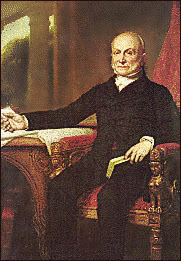 The second Adams to become POTUS was, like his father, elected in the House of Representatives. Andrew Jackson had won both the popular and electoral votes by a plurality but not a majority. A win in the Electoral College required 131 votes. The result was:
The second Adams to become POTUS was, like his father, elected in the House of Representatives. Andrew Jackson had won both the popular and electoral votes by a plurality but not a majority. A win in the Electoral College required 131 votes. The result was:
Andrew Jackson 99
John Quincy Adams 84
William H. Crawford 41
Henry Clay 37
The probable outcome would be some lively horse trading, and that was exactly what happened, resulting in what Andrew Jackson and his supporters called “a corrupt bargain.” Henry Clay is reputed to have said, “I’d rather be right than President” but the bargain he struck with John Quincy Adams made him Secretary of State, which had in the past been a reliable steppingstone to the presidency.
John Quincy Adams becoming the second one and done.
The Jacksonian urge to get even resulted in John Quincy Adams becoming the second one and done, in the footsteps of his father. The second President Adams is known to history for his expertise in foreign policy and his work against slavery. Unfortunately for the grading of his presidency, the former was displayed when he was Secretary of State and the latter during his time in the House of Representatives after he left the White House.
Historians grade his presidency a C or C+ — which may be plenty to compete with Donald Trump.
Martin Van Buren (8), 1837-1841.
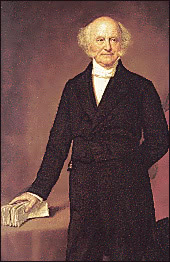 Van Buren, nicknamed “Little Van,” because he was smaller than Marco Rubio, was one of many politicians swimming in the wake of Andrew Jackson. What seems odd today is that Van Buren seemed to be involved in all the major issues of his time and he is credited with major contributions to what became the two-party system. In short (no pun intended), he seemed to have political ability, family connections, a potent political base in New York, and a continuing focus on the issues of the day—but all of that did not bring him a second term. He did get nominated by the Democratic Party with little trouble, but it was all downhill from there.
Van Buren, nicknamed “Little Van,” because he was smaller than Marco Rubio, was one of many politicians swimming in the wake of Andrew Jackson. What seems odd today is that Van Buren seemed to be involved in all the major issues of his time and he is credited with major contributions to what became the two-party system. In short (no pun intended), he seemed to have political ability, family connections, a potent political base in New York, and a continuing focus on the issues of the day—but all of that did not bring him a second term. He did get nominated by the Democratic Party with little trouble, but it was all downhill from there.
He inherited a sickly economy and the Panic of 1837 brought it down to depression level for his term. In our time, a POTUS can do little for a sickly economy but catch the blame. The Federal Reserve Board of Governors runs monetary policy insulated from politics (as John McCain found out to his chagrin when he promised to fire the Fed Chair if elected and discovered he could not) and Congress holds the purse strings that might be used to manipulate fiscal policy. The principal macroeconomic tool at the disposal of the POTUS is his jawbone.
My knowledge of macroeconomics does not extend back to Little Van’s time, and political debate appeared then as now to center on microeconomics—both easy to understand and irrelevant. Fair or unfair, Van Buren caught the blame for the economy, which was, come to think of it, held down a bit by his choice to continue war with the Seminoles started by Jackson in an attempt to move them west of the Mississippi by force along with the other four of the Five Tribes (Muscogee-Creek, Choctaw, Chickasaw, and Cherokee).
Indian Removal was a continuation of Jackson’s policy.
Indian Removal was a continuation of Jackson’s policy, but on another front — slavery — Van Buren was moving away from Jackson. He opposed the Texas Annexation over the slavery issue in addition to not wanting war with Mexico. These issues moved different parts of the electorate in different directions, but everybody who was out of work was unhappy and gave up “Little Van” for “Martin Van Ruin.”
Van Buren was defeated by William Henry Harrison, “Old Tippecanoe,” who put down Tecumseh’s rebellion in the 1811 battle of the same name and then went on to serve as a general in the War of 1812. General Harrison was the first Whig to win the White House, and he served from March 4, 1841 to April 4, 1841.
William Henry Harrison (9), 1841-1841.
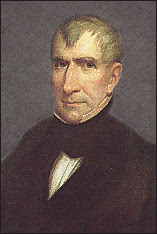 Harrison’s main contribution to history as POTUS was the importation of Tecumseh’s Curse. He became the first POTUS who died in office after being elected in a year evenly divisible by 20. Ridiculed by some, Tecumseh’s Curse did apparently last longer than the Whig Party. It claimed, in addition to Harrison, Presidents Lincoln, Garfield, McKinley, Harding, Franklin Roosevelt, and Kennedy.
Harrison’s main contribution to history as POTUS was the importation of Tecumseh’s Curse. He became the first POTUS who died in office after being elected in a year evenly divisible by 20. Ridiculed by some, Tecumseh’s Curse did apparently last longer than the Whig Party. It claimed, in addition to Harrison, Presidents Lincoln, Garfield, McKinley, Harding, Franklin Roosevelt, and Kennedy.
President Reagan was saved by a combination of Secret Service heroism and John Hinckley, Jr.’s poor marksmanship. President Bush 43 escaped the curse with pure luck when a hand grenade thrown by Vladimir Arutyunian failed to detonate.
Trump supporters do not require evidence
to believe anything.
We may hope that a wounding followed by a clean miss portends the curse tapering off, because Joe Biden was elected in 2020 amid claims by Donald Trump that his second term was stolen and bands of heavily armed Trump supporters who do not require evidence to believe anything The Donald tells them are available for the military duties Mr. Trump has always shirked.
The Harrison 30 day term is a good place to reiterate that only a POTUS who sought a second term and was denied by the voters fits for comparison purposes—not just any one-termer. The one and dones fit for comparison had their papers graded once by the voters and I may give a second opinion with the advantage of hindsight.
John Tyler (10), 1841-1845.
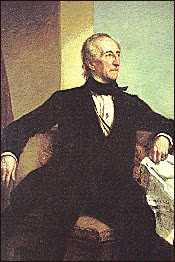 President Tyler never got a chance to ask the voters for a term of his own, much less a second. He was a nominal Whig placed on the ticket to attract southern votes. As POTUS, Tyler destroyed every attempt to enact the Whig wish list. The Whig leadership began referring to Tyler has “His Accidency” and it was clear he would not get nominated for a term of his own. I fudged him into the list because even though he did not face the voters twice, he tried. And because he was probably outside the law when he annexed Texas, and that’s interesting to a history buff who lives in the annexed republic.
President Tyler never got a chance to ask the voters for a term of his own, much less a second. He was a nominal Whig placed on the ticket to attract southern votes. As POTUS, Tyler destroyed every attempt to enact the Whig wish list. The Whig leadership began referring to Tyler has “His Accidency” and it was clear he would not get nominated for a term of his own. I fudged him into the list because even though he did not face the voters twice, he tried. And because he was probably outside the law when he annexed Texas, and that’s interesting to a history buff who lives in the annexed republic.
James K. Polk (11), 1845-1849.
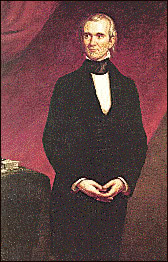 Polk, like Harry Truman in modern times, grew in the rearview mirror of history. He was another of Andrew Jackson’s stable of cronies and he is known mainly for making really manifest Manifest Destiny. In the Mexican War, the U.S. grew across the Santa Fe Trail and the rest of the Southwest all the way to where the Mexican Department of Alta California met the Pacific. It was fear of this war that was one of the primary reasons blocking the annexation of Texas and, sure enough, the Mexican War was kicked off by a border dispute known in the histories as the “Thornton Affair.”
Polk, like Harry Truman in modern times, grew in the rearview mirror of history. He was another of Andrew Jackson’s stable of cronies and he is known mainly for making really manifest Manifest Destiny. In the Mexican War, the U.S. grew across the Santa Fe Trail and the rest of the Southwest all the way to where the Mexican Department of Alta California met the Pacific. It was fear of this war that was one of the primary reasons blocking the annexation of Texas and, sure enough, the Mexican War was kicked off by a border dispute known in the histories as the “Thornton Affair.”
Seth Thornton probably expected a cakewalk on April 24, 1846. He was to reconnoiter upriver while Croghan Ker took a similar patrol downriver from the site where their commander, Zachary Taylor, had planted the American flag on the north bank of the Rio Grande.
Ker found nothing.
Thornton and his 80 men encountered
a Mexican force of 1,600.
Thornton found his way into the history books when he and his 80 men encountered a Mexican force of 1,600. Thornton lost 11 men killed and six wounded. The surviving Americans, including Thornton, were taken prisoner.
The Mexican commander, Anastasio Torrejon, loaded the wounded in a cart and delivered them to Taylor with a message saying he had no way to care for them. This act of decency presaged a negotiated exchange of able-bodied prisoners. Thornton was released, but died in a subsequent engagement and so his life has come to stand for that one encounter that he lost so decisively.
As a result of the “Thornton Affair,” Congress declared war on May 13, the last war that involved engagements with enemy troops on American soil, requiring the participation of “a well-regulated militia.” Before the Mexican War was over, Congress had authorized 50,000 volunteers to back up the regular army.
Mythology in our time holds that the U.S. Goliath smacked down the Mexican David to steal a bunch of real estate, a classic act of imperialism. The facts were more complicated, starting with Mexico having more men bearing arms than the U.S.
Texas became a bone of contention that would not go away short of violence.
Texas had become a bone of contention that would not go away short of violence. Neither side came away from the Battle of San Jacinto with respect for the other, and that would be one reason why Seth Thornton would not anticipate much action. About 900 Texas militiamen (“volunteers”) had beaten 1,200 Mexican regulars at San Jacinto.
Sam Houston had done his best to teach some military discipline to his rag-tag command while in the sometimes wild and hairy retreat all the way across the most populated part of Texas in what the history books call the “Runaway Scrape.” The volunteers got some practice in every soldier’s favorite skill, marching in formation. Marksmanship was something each man brought with him. Or not.
By the time the Mexicans offered favorable terrain for a fight, Houston had been required to send some of his impatient troops on phantom missions to avoid the open rebellion that kept threatening. At San Jacinto, Houston famously sent Deaf Smith to burn Vince’s Bridge to cut off Mexican retreat or further reinforcements.
It was also prudent to keep his own undisciplined troops on the field, but the lack of discipline played out primarily in the mass slaughter of Mexicans trying to surrender, some unarmed and waist deep in the bayou. It was as a result of this war crime in retaliation for the execution of prisoners Texas acquired the colloquialism, “Me no Alamo; me no Goliad,” as an all-purpose disclaimer of responsibility.
Santa Anna had many political enemies happy to kick him while he was down.
On the Mexican side, they blamed the rout on General Antonio López de Santa Anna, who had left 4,000 troops out of the fight and chosen a place for the battle that offered no line of retreat. There was also the folklore that Santa Anna had been dallying with a female slave, “the yellow rose of Texas,” when the battle began, and had been caught trying to escape dressed as a woman. Some of the most outrageous rumors were untrue, but Santa Anna had many political enemies happy to kick him while he was down.
Partially because Mexico thought San Jacinto proved nothing but Santa Anna’s incompetence, it never recognized the Republic of Texas. The victors immediately fell into heavy debt and were willing to beg for annexation, but Texas was a bone of contention within the U.S. as well.
The question of Texas Annexation first showed up in the 1840 elections and would dominate in 1844. The internal issue was an increase in representation for slaveholders. The external issue was the allegation that annexation of Texas meant war with Mexico. A phrase came with the annexation debate that shrugged at war: “Manifest Destiny.”
Another piece of Manifest Destiny settled by President Polk was probably more dangerous than war with Mexico. Polk avoided war with Great Britain by concluding a treaty that divided Oregon Territory along the 49th parallel.
Polk’s first term was a splendid success but for the other major argument against Texas Annexation. He did nothing to sort out the simmering dispute between slave states and free states, with the possible exception of admitting Texas as only one state in spite of its size and thereby upsetting the balance much less than might have been.
Congressional resolution was a sketchy
way to annex Texas.
Congressional resolution was a sketchy way to annex Texas in the first place, but ratification of the Annexation Treaty was not happening over the slavery issue. However that may be, within the resolution was a provision for Texas to divide into as many as five states. Whether that provision survived the Civil War is questionable, assuming it was lawful in the first place. The resolution was not signed by Polk, but by President Tyler. Still, it seems to me fair to accuse Polk of leaving a ticking time bomb by not handling domestic affairs as adroitly as he handled foreign policy.
James K. Polk, even in his later reputation, is outside the Trump comparison because he promised not to stand for reelection when he ran for his first term. In a quaint idea of honor, he did not stand for reelection in spite of being in a strong position had he chosen otherwise.
Franklin Pierce (14), 1853-1857.
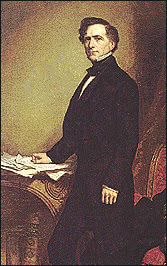 President Pierce was a northern Democrat (New Hampshire) who tried to smooth over the strife with the southern Democrats by appeasing them. His appeasement trashed the Missouri Compromise and entailed enthusiastic enforcement of every pro-slavery provision the South had been able to tuck into the federal laws.
President Pierce was a northern Democrat (New Hampshire) who tried to smooth over the strife with the southern Democrats by appeasing them. His appeasement trashed the Missouri Compromise and entailed enthusiastic enforcement of every pro-slavery provision the South had been able to tuck into the federal laws.
Suffering a common fate of those who appease fanatics, he was unable to get himself nominated for a second term. The voters did not get to grade his papers because the Democratic Party bosses had already flunked him.
James Buchanan (15), 1857-1861.
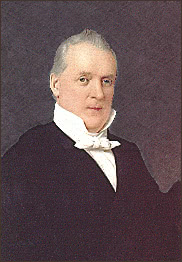 President Buchanan would give President Trump a run for the bottom spot on this list, as he does on the list of all presidents. Buchanan has a horrible reputation among scholars, primarily for failing to make any credible effort to resist the slide into the Civil War. He was, however, burdened with enough scruples to keep his promise not to seek reelection.
President Buchanan would give President Trump a run for the bottom spot on this list, as he does on the list of all presidents. Buchanan has a horrible reputation among scholars, primarily for failing to make any credible effort to resist the slide into the Civil War. He was, however, burdened with enough scruples to keep his promise not to seek reelection.
Rutherford B. Hayes (19), 1877-1881.
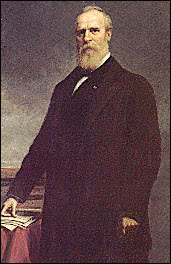 Those who think John Quincy Adams became POTUS by a “corrupt bargain” might want to compare the deal that sealed a win for Rutherford Hayes after he lost the popular vote to Samuel Tilden. The quid pro quo for allowing Hayes to become POTUS in spite of his loss of the popular vote was restoration of white supremacy in the former Confederate states — some would say giving up what was won by great sacrifice in the Civil War.
Those who think John Quincy Adams became POTUS by a “corrupt bargain” might want to compare the deal that sealed a win for Rutherford Hayes after he lost the popular vote to Samuel Tilden. The quid pro quo for allowing Hayes to become POTUS in spite of his loss of the popular vote was restoration of white supremacy in the former Confederate states — some would say giving up what was won by great sacrifice in the Civil War.
Racism reigned ‘de jure’ for just shy of 100 years.
Hayes promised that his presidency would be one and done and so he did not seek reelection. With the former slaves no longer having federal troops to assure their access to the ballot box, racism reigned de jure for just shy of 100 years, until the Voting Rights Act of 1965. Since the modern SCOTUS struck down the preclearance provision, racism is still rampant de facto.
Benjamin Harrison (23), 1889-1893.
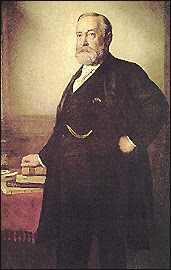 This President Harrison is the grandson of William Henry Harrison. Benjamin Harrison served a full term and presented his accomplishments to the voters in a bid for a second term. The voters did not find him worthy.
This President Harrison is the grandson of William Henry Harrison. Benjamin Harrison served a full term and presented his accomplishments to the voters in a bid for a second term. The voters did not find him worthy.
Harrison would probably claim his primary accomplishments were economic. Two issues dear to his heart were beyond his reach. Anticipating JFK, he favored federal aid to education. Anticipating LBJ, he wished to protect the right of African-Americans to vote.
Harrison ran the U.S. economy behind a wall of protective tariffs. While this greatly increased government revenue, he did not anticipate President Trump… whoa, that’s not fair. President Trump failed to understand that tariffs eventually come out of the pockets of U.S. consumers. President Harrison either did not understand the same thing or he did not care.
The voters did care, and they cleaned his plow.
The voters did care, and they cleaned his plow in the 1890 midterm elections. When the high prices and what the voters saw as out of control government spending continued after the message they sent in the midterm elections, they retired Benjamin Harrison in favor of Grover Cleveland — the very man Harrison had defeated in 1888 to begin his first term, which he probably did not anticipate would be one and done.
William Howard Taft (27), 1909-1913.
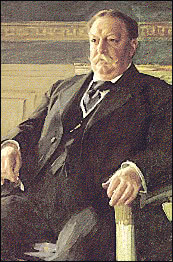 Civil rights for African-Americans were identified with Abraham Lincoln, Republican. Government action to rein in the depredations of big business — breaking up corporations if need be — and government action to set aside wilderness for future generations were identified with Theodore Roosevelt, Republican.
Civil rights for African-Americans were identified with Abraham Lincoln, Republican. Government action to rein in the depredations of big business — breaking up corporations if need be — and government action to set aside wilderness for future generations were identified with Theodore Roosevelt, Republican.
These policies are anathema to the contemporary Republican Party. The eastern Republicans who favored civil rights laws have been chased off and the western Republicans who favor conservation are unable to command a majority. The major rift in the party traces back to William Howard Taft and why he was one and done.
Taft was Theodore Roosevelt’s handpicked successor. Two issues — anti-trust and conservation — pushed the two men apart and the rift only got wider and deeper over time, fed by Roosevelt’s sense of betrayal, and leading Roosevelt to run against Taft in the Republican Primary when Taft’s first term ended.
Taft used every advantage available to an incumbent to defeat Roosevelt in the primary — just barely. Outraged, Roosevelt continued his run for the White House, leading the Progressive wing of the Republican Party to form the Bull Moose Party (a name from an incident in which Roosevelt was shot by an assassin but insisted on finishing his speech before being carted away to the hospital, saying. “It takes more than that to kill a bull moose”).
By this time, the U.S. two-party system was Republicans and Democrats.
By this time, the U.S. two-party system was Republicans and Democrats. It seemed predictable that the very much alive bull moose would split the Republican vote and elect the Democrat. It was not predictable that the POTUS seeking another term would come in third in the popular vote. When the Electoral College met, it voted:
Woodrow Wilson 435
Theodore Roosevelt 88
Taft 8
Taft won only Vermont and Utah, leaving him one and done.
Herbert Hoover (31), 1929-1933.
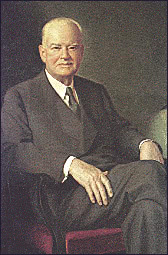 The first year of the Hoover administration was the year of the great stock market crash, which heralded the Great Depression. Hoover’s one and done is synonymous with the Depression today and it became so with the voters at the time.
The first year of the Hoover administration was the year of the great stock market crash, which heralded the Great Depression. Hoover’s one and done is synonymous with the Depression today and it became so with the voters at the time.
Hoover signed the Smoot-Hawley Tariff Act, causing Canada and much of Europe to retaliate and sending prices up in a manner especially cruel to people already out of work. Hoover did not move on when tariffs proved futile. As a general policy, he considered poverty to be an issue for state and local governments and private charities. Unemployment rose over 20 percent before he would even consider federal intervention, at which point he agreed to some public works projects — too little, too late.
Hoover’s devotion to the gold standard, balanced budgets, and so forth were the conventional wisdom of the time, and he was by all accounts not a mean man. He just never could get his head around the size of the problem. The Great Depression came to define Hoover’s presidency, and the result at the ballot box was predictable.
Jimmy Carter (39), 1977-1981.
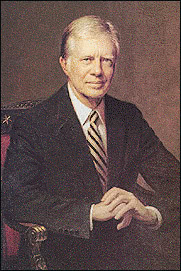 President Carter, like President Hoover, was a decent man who got in over his head. He also had in common with Hoover that he lacked the political sense that normally goes with high office. You might say he engaged in deficit spending his political capital.
President Carter, like President Hoover, was a decent man who got in over his head. He also had in common with Hoover that he lacked the political sense that normally goes with high office. You might say he engaged in deficit spending his political capital.
Carter came out of the chute like he was riding a landslide.
Carter was elected when he defeated President Gerald Ford by a hair, but he came out of the chute like he was riding a landslide. On his second day in office, he pardoned the Vietnam draft resisters. Carter — a graduate of the U.S. Naval Academy — knew the pardon would be controversial, but he also knew it was the right thing to do. Sort of like giving the Panama Canal back to Panama, although in the case of the canal he had less control over the timing.
Hoover was stumped by one big problem. Carter had a slew of problems, where his share of the blame varied from zero to total… but there were just so many of them. The Soviet invasion of Afghanistan sent the détente with the Soviet Union too far off track to be reeled in by boycotting the Moscow Olympic Games, so it’s hard to see the value in the hundreds of sad but true stories running in local newspapers about the kid who trained for years, made the team, and now watches the Olympics on TV. Carter the peanut farmer put other farmers in a tight spot with the grain embargo against the Soviet Union. Sending arms to Osama bin Laden to get his mujahideen to evict the Soviets was not yet an option.
The Three Mile Island nuclear accident claimed a lot of newsprint for a long time — radioactivity does last a long time, and I’m betting the nuclear accident got more coverage than Carter’s attempt to steer the country to solar energy.
Bubbling along in the background was the crisis that taught most of us a new word: stagflation, a neologism to describe high inflation coinciding with high unemployment and slow growth. Those three economic ailments do not usually appear at the same time, and some economists are still saying WTF?
Another slow burn was the Iran Hostage Crisis.
Another slow burn was the Iran Hostage Crisis, exacerbated when Carter approved a military rescue — Operation Eagle Claw — that just had too many moving parts. The parts voters were likely to remember were shown in news magazines after U.S. military aircraft collided over the Iranian desert. Eagle Claw ended with full color photos of recognizable parts littering the desert along with the corpses of eight GIs and one Iranian civilian.
What was to be done with the Iranian claim that the hostage-takers were not acting for the government? Carter filed suit against Iran in the Permanent International Court of Justice and invited them to prove it. The U.S. prevailed. By that time, so had Ronald Reagan, and President Reagan would tear the solar panels off the White House roof almost as quickly as President Trump dug up Michelle Obama’s vegetable and herb garden.
George H.W. Bush (41), 1989-1993.
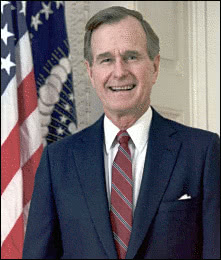 Bush 41 is one of the most puzzling of the one and done crowd, and he may be the one President Trump would most like to beat out in any ranking of presidents who were rejected by the voters for a second term. I cannot say how Mr. Trump got the burr under his saddle regarding the Bush family, but Trump is more interested in personalities than in policies. It probably has something to do with offense taken, whether or not offense was intended.
Bush 41 is one of the most puzzling of the one and done crowd, and he may be the one President Trump would most like to beat out in any ranking of presidents who were rejected by the voters for a second term. I cannot say how Mr. Trump got the burr under his saddle regarding the Bush family, but Trump is more interested in personalities than in policies. It probably has something to do with offense taken, whether or not offense was intended.
The thing I find odd about Bush 41’s loss is that the voters generally like him. There was no jihad against the Bush White House and most disagreements with Bush are about policy — too far left for some Republicans and too far right for most Democrats.
One unfortunate piece of luck for Bush is that his major accomplishments are in foreign policy and the voters typically don’t care about foreign policy unless we are in a war. I mean “don’t care” in the sense that foreign policy alone seldom decides a vote without a war. Bush 41 did have a war, but it was conducted quickly, successfully, and for a reason easy for voters to understand. Therefore, it did him no political harm.
He told Iraq’s dictator at the front end how to end hostilities.
Regardless of what you think about expelling Iraqi troops from Kuwait, Bush’s handling of it was masterful. He took time to build a broad coalition and made it a priority to include Arab states. He told Iraq’s dictator at the front end how to end hostilities: withdraw your forces from Kuwait. He kept that option open during the entire war.
When the Republican Guard was defeated and there was no chance of defending Baghdad, Bush did not go to Baghdad. “Why?”, he reasoned. “We don’t want to run Iraq; we just don’t want Iraq to run Kuwait. If we depose the government, what replaces it?” Would that Bush 43 had reasoned the same way. He, too, had no reason to take Baghdad. Seventeen years after Bush 43 went to Baghdad, the United States still sticks to that tar baby.
Bush 41’s primary misstep in domestic politics was an unforced error, a statement no competent politician should make: “Read my lips; no new taxes.” A sovereign nation — particularly one that holds the world’s reserve currency — need not balance its budget every year. Nonetheless, Bush also committed himself to a balanced budget.
When faced with a choice of cutting an expenditure he thought to be in the national interest or a modest tax increase, Bush did the sensible thing. Unfortunately for him, the voters had read his lips.
Some people attribute Bush 41’s loss to the third party candidacy of Ross Perot.
Some people attribute Bush 41’s loss to the third party candidacy of Ross Perot. The polls appear to show that Perot took votes in about equal numbers from Bush and the Democratic candidate who made Bush a one and done, Bill Clinton. I am agnostic.
There you have the one and done presidents. I finish this article just before Congress is due to accept the report of the Electoral College, which has voted to make Joe Biden the President-elect. Mr. Trump has been tweeting encouragement to his followers to come to Washington on January 6. This may be the call for which he admonished the Proud Boys to wait. If Antifa shows up to stop the Proud Boys, may I bid on the popcorn concession?
I invite my more or less gentle readers to rank the names of the one and done. I will only express one opinion and it assumes that Mr. Trump, having failed at the polls and failed in the courts, will not succeed in claiming a second term by street fighting. I think Adams (2) began the custom of the candidate with fewer votes turning the office over to the candidate with more votes, and that custom prevailed until it was shaken loose this year by Trump (45). I’ve been unable to construct a rational argument that any other question faced by a POTUS is more important, and even Mr. Rudolph William Louis Giuliani, esq., has been uncharacteristically silent.
I would put Adams 2 at the top and Trump at the bottom.
[Steve Russell comes to The Rag Blog after writing for The Rag from 1969 to the mid-seventies. He is retired from a first career as a trial court judge in Texas and a second career as a university professor that began at The University of Texas-San Antonio. He is now associate professor emeritus of criminal justice at Indiana University-Bloomington. Russell is a citizen of the Cherokee Nation and a ninth grade dropout. He is living in Sun City, just north of Austin, and working on a third career as a freelance writer. He is the author of Lighting the Fire: A Cherokee Journey from Dropout to Professor. He can be reached at swrussel@indiana.edu. ]
- Read more articles by Steve Russell on The Rag Blog
and listen to Rag Radio interviews with Steve.


















Incomplete sentence at end of bio!!
Great stuff, Steve!
Fixed. Thanks, Mariann.
Fascinating!